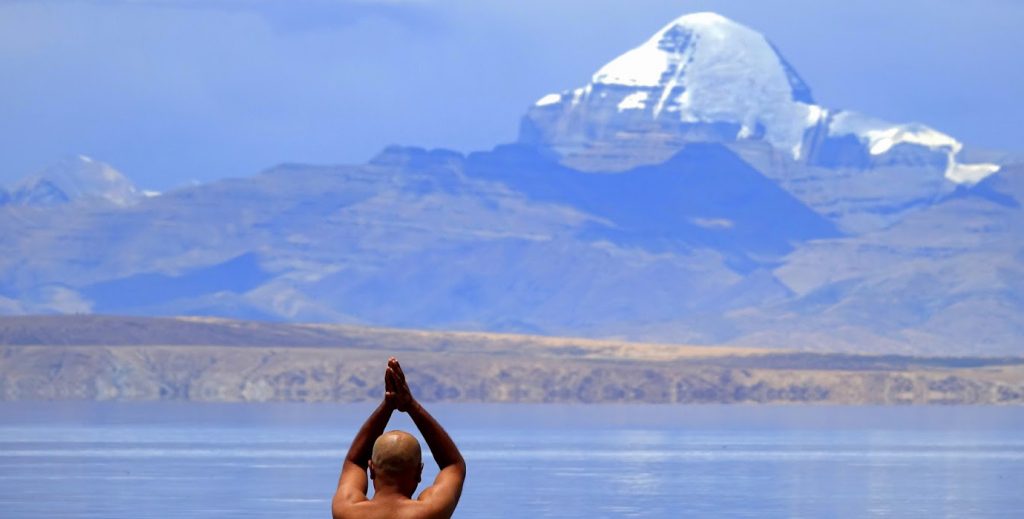Mount Kailash and Lake Mansarovar, adjacently located to each in an area not far from the trisection of Nepal-India-Tibet Autonomous Region, are sacred pilgrimage destinations to people of four different religions – Hinduism, Buddhism, Jainism and Bon.
Religious Significance –
Kailash Mansarovar has great importance in mythology and history.
Hindu beliefs
According to Hindu beliefs, the literal translation of manasarovar is ‘Mind Borne Lake’ – ‘manasa’: mind, ‘sarovara’: ‘lake’; meaning the lake that Brahma created in his mind.
Mount Kailash is considered as the abode of Hindu God, Shiva, where he lived with wife Parvati. He danced upon the top of the mountain. It is here in Kailash that Shiva became Natraj, Adi Shankara, Maha Rudra and Bhairava. Mount Kailash is also the embodiment of the mythical Mount Meru (Sumeru). Hindu legends and mythology hold Mount Meru as the centre of the Universe; with every heavenly orb circling around it.
Hindus hold the belief that going for Kailash Mansarovar Yatra will wash all their sins away and they attain ‘Swargaloka’ – the heavens, upon death. Mount Kailash trek is the pathway to ultimate salvation for the Hindus. It is believed that Pandavas in Mahabharata also headed north for Kailash at the end of their reign in Hastinapur.
Buddhist beliefs
In Buddhism, sites in the region are associated with Guru Rinpoche, who established Buddhism in the region, around the 7th and 8th centuries. Buddhists believe Maya bathed in Mansarovar before giving birth to Siddhartha. Lake Mansarovar is also associated with many teachings in Buddhist literature.
Bon beliefs
People of Bon Faith in Tibet believe Mount Kailash to be the centre of the earth and hold that their founder, Tonba Shenrab, bathed in Mansarovar during his first visit to Tibet.
Jain beliefs
The central figure of Jainism – Rishabhnath is believed to have attained salvation here.
Hindus and Buddhists go around Mount Kailash in a clockwise direction while Jains and Bons go around in counter- clockwise direction.
Significance of Kailash Parikrama –
Kailash Mansarovar Yatra majorly performed because Hindu pilgrims wish to do carry out the Parikrama (going around) of Mount Kailash and its Charan Sparsh (touching the feet), and later going around the Lake Mansarovar and performing Holy Dip in the lake.
There are two types of Parikramas that pilgrims undertake – the inner Parikrama and the outer Parikrama. The former is more rigorous and takes one aound the Nandi Parvat while the latter covers Mount Kailash. One Parikrama is believed to wash away sins of seven past lifetimes while 108 Parikramas provide Moksha or Nirvana (eternal oblivion).
Geographical Significance –
Lake Manasarovar and the vicinity of Kailash have irrigated and given life to most part of the subcontinent and are its life blood. The area surrounding the mountains are the source of four large rivers in the Indian Subcontinent – Ganga (Karnali), Brahmaputra, Sutlej and Indus.
People therefore view Mansarovar as their mother (janani) becuase of her role in feeding and nourishing them. Kailash, abode of lord Shiva – who destroys all evils and fear, is viewed as their father.





















